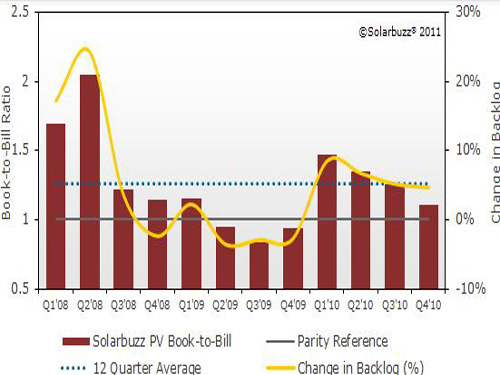 Figure I, Q1'08-Q4'10 solar equipment orders shipping ratio According to Solarbuzz PV Equipment Quarterly report pointed out that Q4'10 (as of December 31, 2010) solar equipment orders than Book-to-Bill) The average value of the month is 1.10, and the annual average of 2010 is 1.27, which is significantly higher than the 0.97 in 2009.
Figure I, Q1'08-Q4'10 solar equipment orders shipping ratio According to Solarbuzz PV Equipment Quarterly report pointed out that Q4'10 (as of December 31, 2010) solar equipment orders than Book-to-Bill) The average value of the month is 1.10, and the annual average of 2010 is 1.27, which is significantly higher than the 0.97 in 2009. Solarbuzz senior analyst Finlay Colville said, “The latest solar equipment order shipment ratio reflects continued investment in crystalline silicon and thin-film solar cells, which will drive strong capacity expansion in 2011. First-tier crystalline silicon cell manufacturers have sufficient downstream orders. , is seeking vertical integration to achieve a production capacity above GW; on the other hand, investing in a-Si/uc-Si and CIGS thin film technologies represents new market entrants to continue to look for low-cost solutions, in addition to the unique competitiveness of First Solar, can further Challenge the dominance of crystalline silicon technology in the market.â€
Through the close observation of the solar equipment supply chain, the solarbuzz solar equipment order shipment report analyzes each solar photovoltaic company's quarterly equipment expenditure data, and correlates relevant orders and revenues to the appropriate process equipment manufacturers.
The order-to-bill ratio (B/B value) is the total amount of orders divided by the total amount shipped over a specific period of time and is the ratio of equipment supply chain demand and supply. The Q4'10 order shipping ratio of 1.10 means that the equipment supplier will receive orders for about USD110 per product for every USD100 shipped.
The combined ratio analysis of orders for solar energy equipment after the merger is based on the investment in equipment in existing and emerging technology fields and can derive an industry average. One of the first-line solar cell manufacturers' new investment can be used as an industry leading indicator to assess the impact of production equipment on terminal solar PV supply and demand.
Colville added, "In 2010, the first-line monocrystalline silicon cell and film panel manufacturers met the market demand of 75%. The trend of equipment supply from the solar cell manufacturing segment highlighted the very positive scale of overall solar photovoltaic capacity expansion. There may be an oversupply situation in the second half of 2011.
The order shipment ratio of solar equipment at the first-line plants reached 1.39 at Q4'10, which was higher than the average of 1.26 in the past 12 months. It is estimated that the shipment ratio of orders in this group may be lower than 1 in Q2'11, which will be the first signal for first-line solar photovoltaic manufacturers to slow down their capacity expansion; this will affect first-line solar energy equipment manufacturers in the second half of 2011 and 2012. The revenue for the first half of the year.
Source: Solarbuzz PV Equipment Quarterly
Solar equipment order shipments are up-to-quarter. Solar cell capital equipment spending trends can now be clearly tracked using Solarbuzz's solar battery shipment order data in the quarterly reports of global solar manufacturers and equipment. This industry analysis provides performance indicators that track global quarterly Equipment supply chain order changes. From the interactive analysis of different order shipment trend graphs, it is possible to grasp the overall health of the solar cell manufacturing industry, and the published phased capacity expansion plan can also provide tools for predicting the scale and time points. Solar cell order shipment data is updated on a quarterly basis and includes battery cell manufacturer capacity and new investment tracking since 2005. In addition to the quarterly release of comprehensive updates, the detailed research content and database enhancements are also featured in this report. The latest issue of Solarbuzz global PV manufacturers, PV Equipment Quarterly report will be released in April.